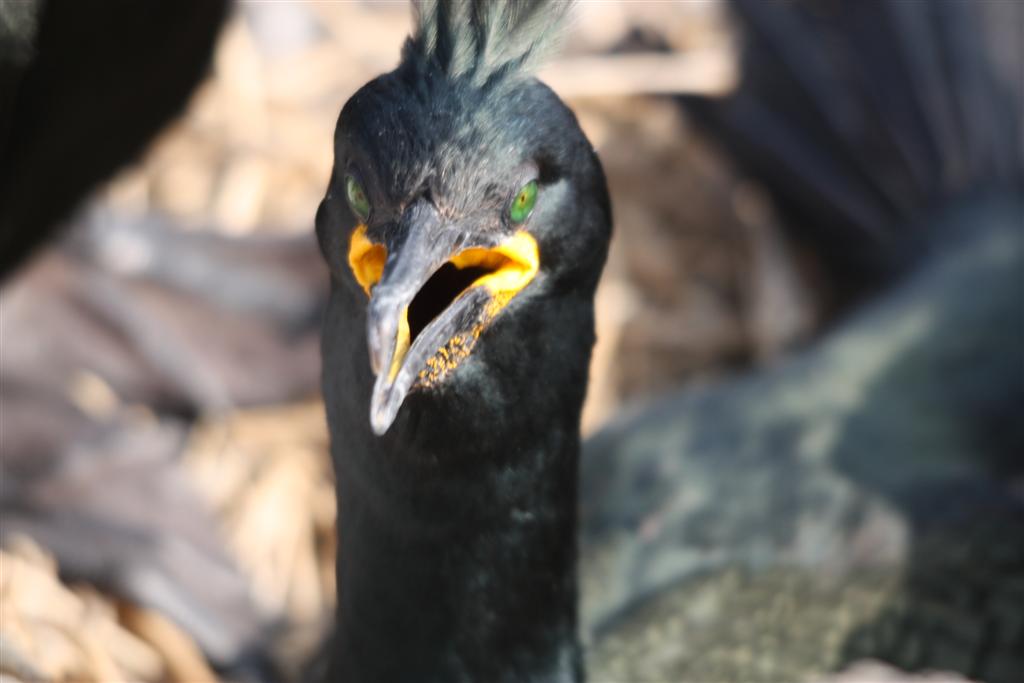The Curious Intimacy of the Shag
‘The common Cormorant or Shag
Lays its eggs in a paper bag.’
So wrote Christopher Isherwood, but he was wrong on both counts.
The common Cormorant is not the same bird as the Shag. It is much bigger and has a white patch below its beak and under its belly. The Shag is the more attractive of the two. It’s plumage has the most wonderful iridescent sheen of racing green, it’s eye a glistening jewel of green glass, the tuft on its head an inverted comma, it’s bill a slender split rod, hooked at the end with two bright yellow patches at its base.
But the yellow doesn’t stop there; when it opens its bill, it’s gape, it’s slender tongue and even the very back of its throat, is of the same bilious yellow. And there is an interesting fact that few but the most dedicated and intimate of observers know, it’s anus is the same colour, which begs the question, is it bright yellow all through?
When I was young, much younger than I am now, I couldn’t believe that the Queen had a gastrointestinal tract and the thought that she might go to the loo and produce a poo was quite appalling. No I imagined her blue, royal blue (of course) inside; no organs – she was the Queen – just royal blue. I am under no such delusions about the Shag. I have seen it shuffling its feet back to the edge of its ledge, lifting its tail, distending that amazing anus and shooting a jet of white guano onto the crowded ledges below. It pays the Shag to arrive early and grab the accommodation with the best views.
Not nearly as vocal as the garrulous Kittiwakes, with whom, they often share the same apartment block, Shags proclaim their desire and displeasure with the same bilious belch, a resonant grunt, that emanates from deep inside their yellow belly.
On the Farne Islands, you can get so close to Shags that you get to know more than you need to know. I even photographed Shags shagging. And in the heat of the day, they can be seen atop their piles puffing air in and out of a distended throat pouch to cool down. Shags, like all other birds, are poikilothermic, the have no sweat glands and they do not shiver. They pant to cool down and when they have been fishing in cold water, they stand in the sun with their wings extended like the iconic eagles on the Polish flag, to warm up.
But do they lay their eggs in paper bags? No, they deposit their egg, slender and pointed, on a pile of sticks or rotting seaweed, which they filch from others nests if they can’t find enough for themselves. But Lear’s fantasy engages the imagination, creating worries of ledges lined with paper bags and eggs dropping through as soon as they got wet.
Where would the shags get their paper bags anyway? Could the trustees of the National Trust be persuaded to supply shag bags, which their members could purchase in aid of conservation? Wouldn’t Edward Lear have loved to attend the meeting where that proposal were considered?




Dear Nick
There is a serious error in this blog. Christopher Isherwood is responsible for the myth of the common cormorant! xpenny
Whoops, you’re absolutely right. I didn’t check. I just assumed it must have been Lear. Thank you. Nickx